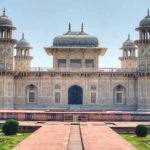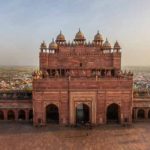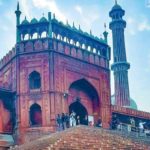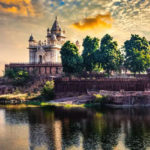Top Rated Attractions in Agra boasts of having one of the seven wonders of the world and three UNESCO world heritage sites, the Taj Mahal and the Agra Fort and the Fatehpur Sikri nearby. Agra is a delight for history and architecture lovers. The medieval city located on the banks of the river Yamuna, it is one of the most visited cities by tourists in India.
Strategically located at the heart of India in the mundane plains between the Ganga and Yamuna, Agra had been a religious and commercial centre for centuries, but it matured and perfected itself only when the Mughals made it their home. Agra is not only famous for its Mughal art and culture but is also known for its food, chat, and the famous Panchi ka Petha. The city even after being one of the hottest cities of the country, is visited in high numbers every day.
The nightlife might not be something worth mentioning but the beauty that this old city acquires at the night makes you love it and relish every bit of it. Peoples’ hearts here are as grand as the Buland Darwaza, the sight of Taj Mahal is as sweet as the Petha for the eyes, and shopping on the streets in the sunny afternoons is as chatpata as the famous Daal Moth. Come to the city for a weekend’s exploration of architectural marvels such as Fatehpur Sikri, the feel of an old city, and to know for yourself what is this city described as a paradise in Mahabharta so popular for Agra Tours.
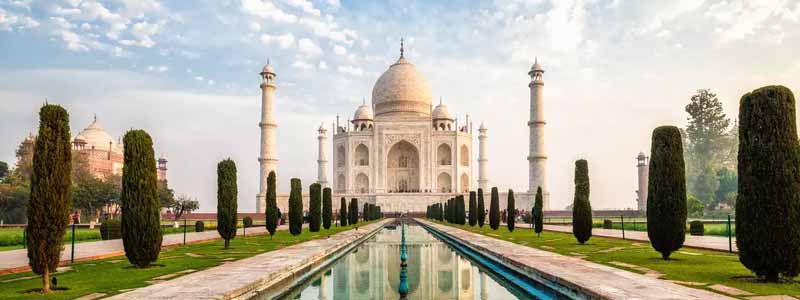
Taj Mahal
You’ve seen it in history books, on postcards, and in social media posts. But now, you’ve made your way to India, and you finally have the chance to see the Taj Mahal in real life.
The magnificent structure dates back to the 17th century. Mughal emperor Shah Jahan was heartbroken after his beloved wife, Mumtaz Mahal, passed away during childbirth, and decided to pay tribute to her with a white mausoleum. Construction took more than 20 years to complete and required the manpower of around 20,000 laborers.
There’s never a bad time to see the Taj Mahal, but it’s worth getting here early—the building seems to radiate at sunrise. Tourists can enter the UNESCO World Heritage Site via the west and east gates. Once inside, explore the ornamental gardens, which feature calming water features that reflect the Taj. Then, head inside the Taj itself and admire its perfect symmetry and white marble with elaborate floral cavings and semiprecious stone inlays.
Sightseeing around the Taj Mahal complex continues at the Kau Ban Mosque, west of the Taj, and the Jawab, a building intended to mirror the mosque and preserve symmetry on the main structure’s eastern side Agra Monuments.

Agra Fort
The Taj Mahal isn’t the only UNESCO World Heritage Site in Agra—the city is also home to Agra Fort, a centuries-old red sandstone fortress that was once the imperial city for a succession of Mughal rulers.
Sightseeing here is like wandering around a city within a city. The most extraordinary building at Agra Fort is Jahangir Mahal, a massive palace that blends stunning Hindu-inspired features (like overhanging enclosed balconies) with Central Asian architectural elements (such as the signature pointed arches). Inside, tourists can see the gilded central court where royal women once passed their days.
Tourists can also check out a range of other noteworthy structures, including Anguri Bagh (a courtyard with puzzle piece-like outlines of gardens around water channels), Khas Mahal (a palace with pavilions made of white marble and red sandstone), Musamman Burj (an octagonal tower with intricate marble inlay work), and Diwan-i-Khas (a gathering hall featuring a pair of black and white marble thrones).
With so much to see, Agra Fort will require at least a few hours on your itinerary. It makes for a great afternoon stop after a morning at the Taj Mahal.
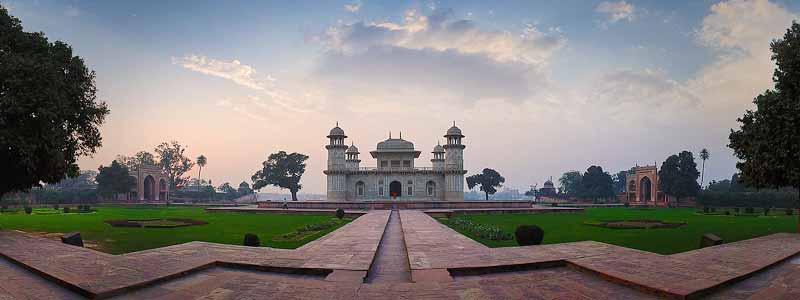
Itimad-ud-Daulah’s Tomb
On the banks of the Yamuna River sits another one of Agra’s exquisite structures: Itimad-ud-Daulah’s Tomb. The mausoleum contains the remains of Mirza Ghiyas Beg, a Persian official who served the Mughal empire, as well as his wife.
Legend has it that this jewelry box-like tomb was actually the inspiration for the Taj Mahal, earning it the nickname “Baby Taj.” The red sandstone and marble structure features 13-meter-high hexagonal towers on each corner.
The most noteworthy thing about this attraction, though, is that it was the first structure to use pietra dura, the iconic Indian inlay technique that uses semiprecious stones to create decorative floral designs in marble. You’ll see exquisite geometric patterns, depictions of vases and cups, and delicate flower bouquets from floor to ceiling of the graceful structure—reminiscent of those on the Taj Mahal.
Despite its beauty, Itimad-ud-Daulah’s Tomb gets far fewer visitors than other attractions around Agra, making it an ideal place to appreciate the lovely features without the crowds.
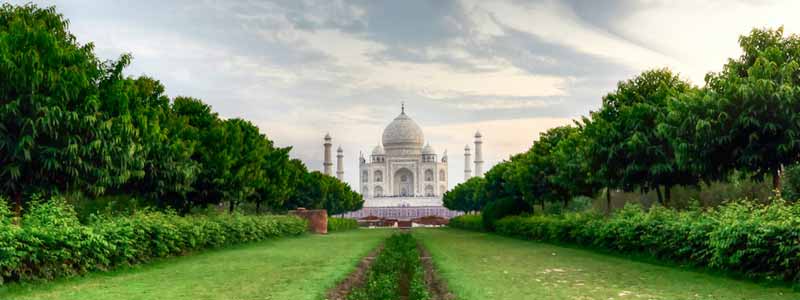
Mehtab Bagh
The Taj Mahal almost seems to extend across the Yamuna River at Mehtab Bagh (Moonlight Garden), a square garden complex measuring 300 meters on each side. It’s the only remaining park in a series of nearly a dozen Mughal-built gardens in the area.
The park has some pretty flowering trees and bushes—a stark improvement from its state in the mid-1990s, when the site was just a mound of sand. The Archeological Survey of India is hard at work restoring Mehtab Bagh to its original glory by planting Mughal-era plants, so in the future, it may become Agra’s answer to New York City’s Central Park.
The landscape aligns perfectly with the gardens of the Taj, making it one of the best places in Agra to get a view (or a photo) of the stunning structure—especially at sunset. Outside of the gates to the complex, you can shop for Taj Mahal trinkets and other souvenirs from sellers in the area Top Rated Attractions in Agra.
Akbar’s Mausoleum
For nearly 50 years, emperor Akbar the Great ruled the Mughal kingdom, tripling its empire to include most of the northern half of the Indian subcontinent. His remains (along with those of two of his daughters) can be found at what is now one of the most popular tourist attractions in Agra, Akbar’s Mausoleum.
The complex features a marvelous sandstone and marble tomb with striking marble inlay in a variety of colors. The structure is surrounded by Mughal gardens that are home to deer, antelope, monkeys, and even a few peacocks.
If you happen to travel with a compass, whip it out at this site. You’ll notice that the tomb faces east—a contrast to nearly all other Mughal tombs, which point toward Mecca Top Rated Attractions in Agra.
Fatehpur Sikri
Just an hour’s drive from the Taj Mahal, Fatehpur Sikri makes for a worthwhile day trip from Agra. The city, once the capital of the Mughal Empire some 500 years ago, was built by Akbar as a salute to the famous Sufi saint, Shaikh Salim Chishti, who accurately predicted the birth of an heir. Residents abandoned the city not long after it was built, when water supplies ran too low.
Tourists can now explore the well-preserved remains of this red sandstone ghost town, still surrounded by a fortification wall. Check out the Jama Masjid, a mosque and one of the first buildings finished in the city. Then, explore the three palaces, built for each one of Akbar’s wives. They combine a variety of religious-inspired architectural styles that honor the women’s individual spiritualities.
Finally, get off the beaten path and stroll to Hiran Minar, a circular spiked tower covered with stone elephant tusks, atop which Akbar himself supposedly gazed at wildlife.
Dig in deeper to this incredible site with a visit to the Archaeological Museum, near the Diwan-i-Am main gate. It contains four galleries filled with treasures from the Mughal era and beyond, including grey ware pot shreds, terra-cotta lamps, mini human heads in stone Top Rated Attractions in Agra.
Agra Bear Rescue Center
Between its reverence for cows and its temples dedicated to specific creatures, India has a fascinating relationship with animals. But not every tradition has been kind to four-legged creatures. Case in point: Dancing sloth bears.
For thousands of years, India’s Kalandar community has poached sloth bear cubs, driven a red hot poker and coarse rope through their muzzles and yanked on the string to force them to put on painful “performances” for a paying audience. India prohibited the cruel practice in 1972. However, the mistreatment continued—leaving animal rights activists, such as Wildlife SOS, to save the victimized bears Top Rated Attractions in Agra.
You can see around 200 of these rescued dancing bears at Agra Bear Rescue Center. It opens the facility to tourists for three two-hour sessions each day, which include a guided tour; a documentary screening on rescue efforts; and a chance to see the bears playing, foraging, and climbing trees. It’s a heartwarming experience, and all proceeds go toward rehabilitation efforts.



